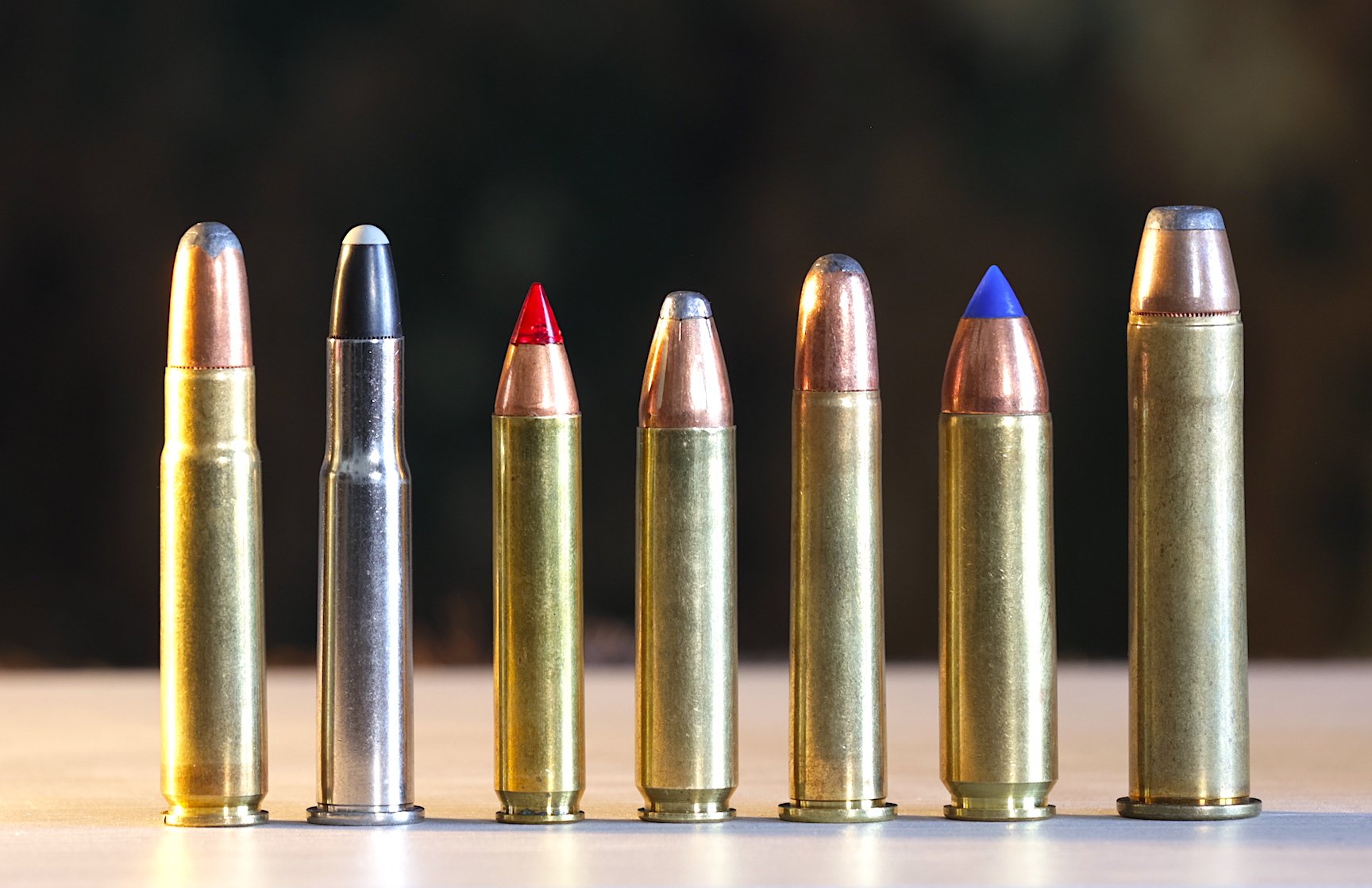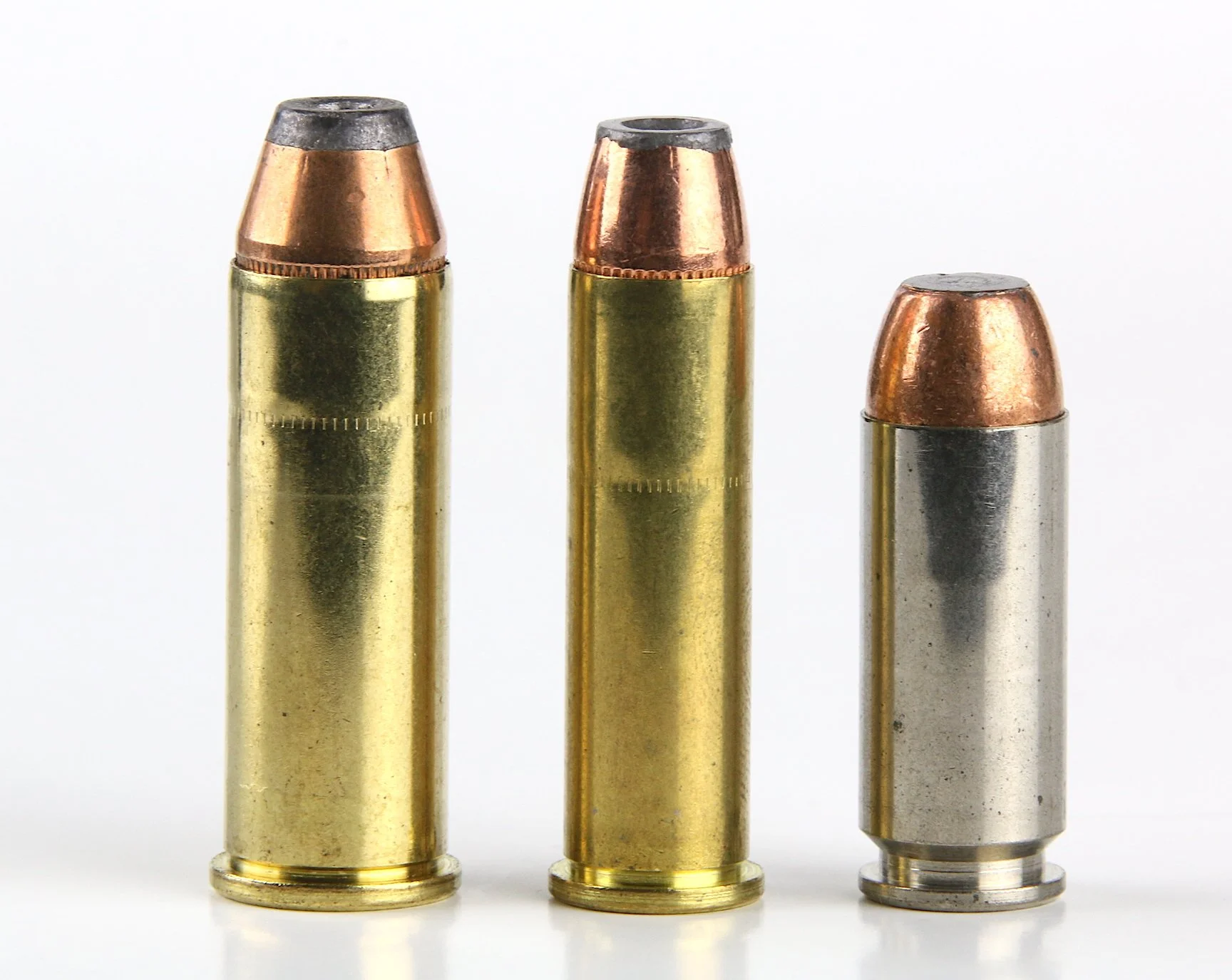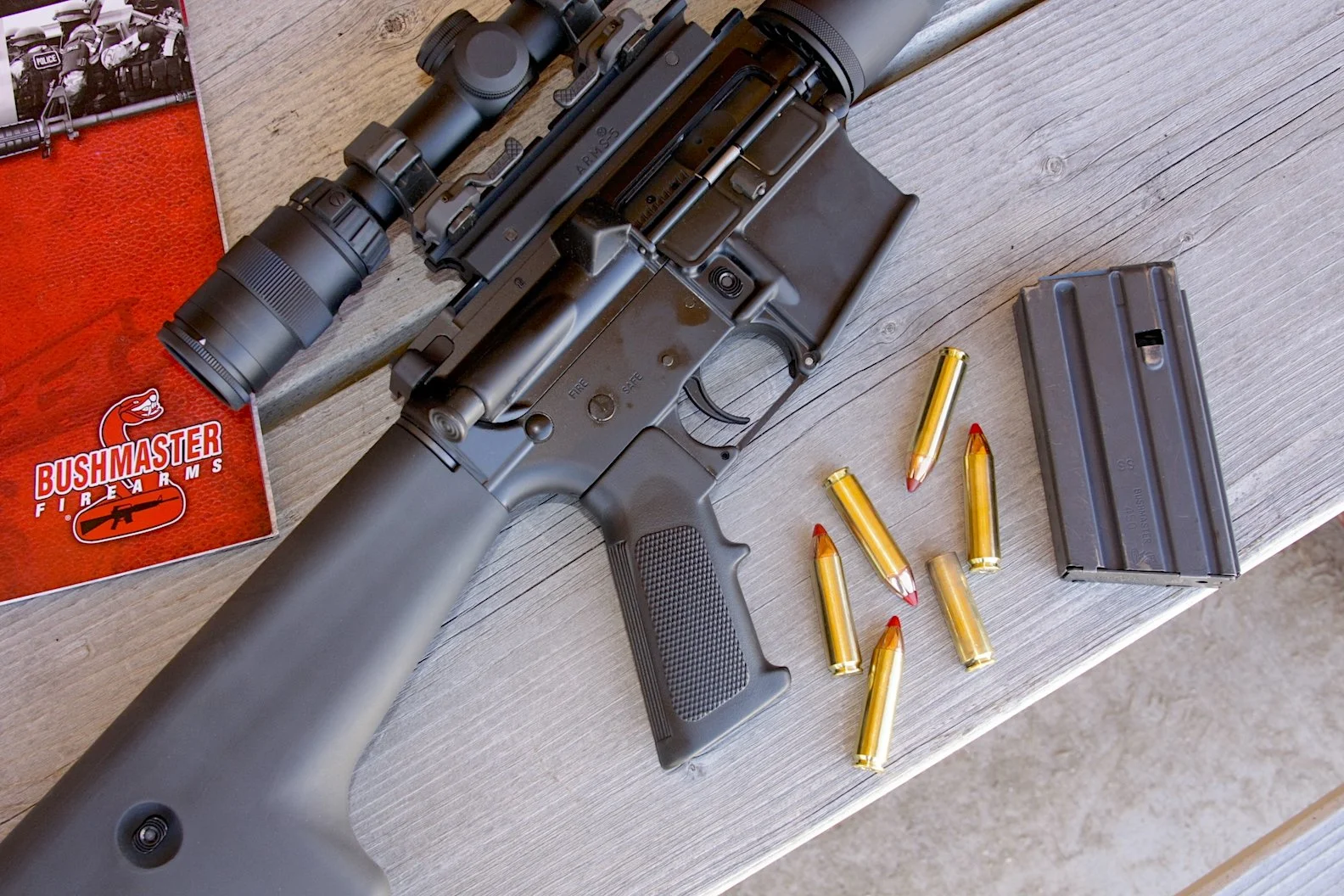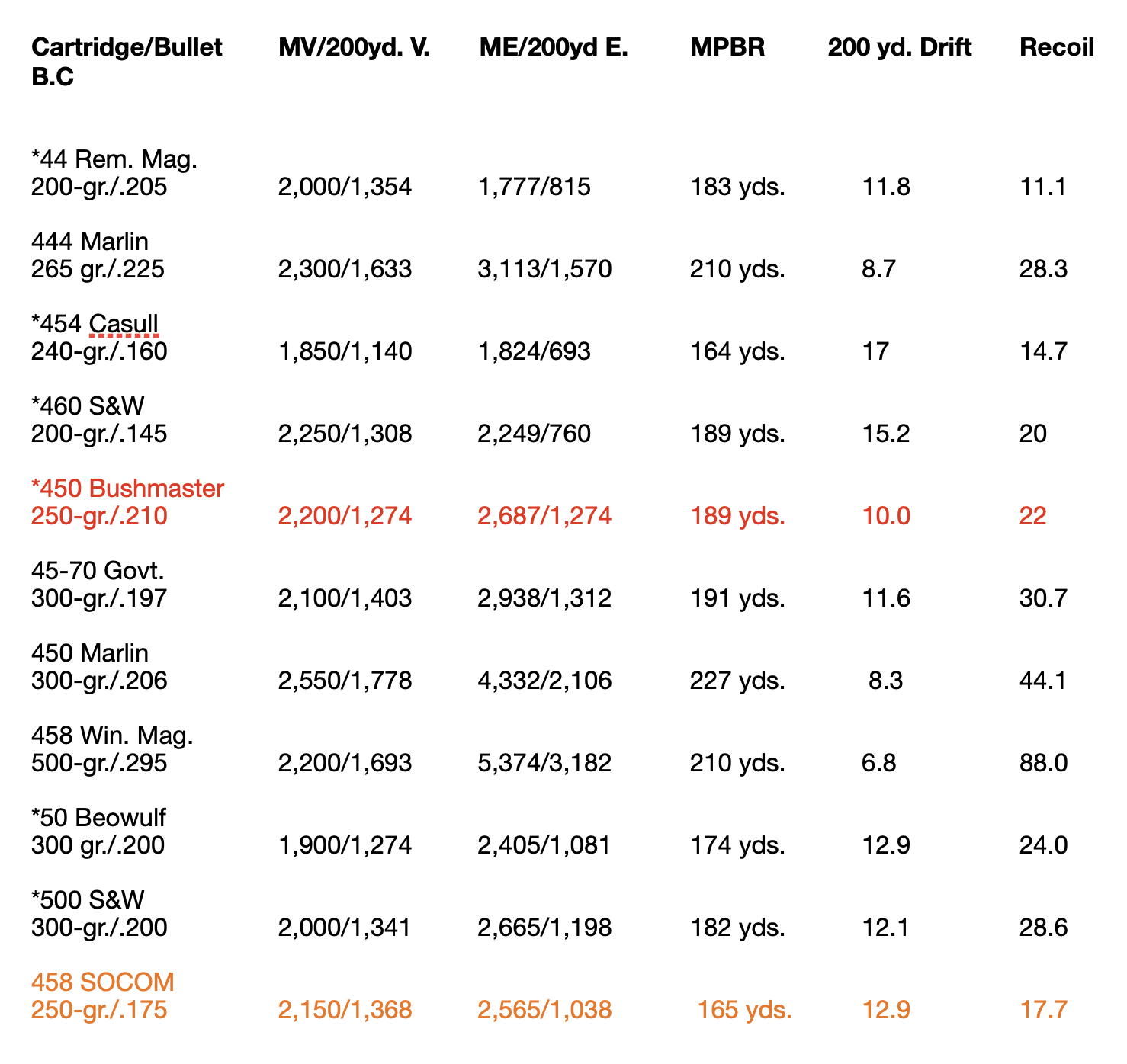Straight Walled Rifle Cartridges Compared (and Why We Have Them)
Some straight wall cartridges and associates: 357 Magnum, 10mm Auto, 44 Rem. Mag., 35 Remington, 30-30 Winchester, 350 Legend, 360 Buckhammer, 400 Legend, 450 Bushmaster, 45-70 Govt., 450 Marlin, 32-40 Winchester, 405 Winchester, 458 Winchester, 500 Nitro Express, 450 Nitro Express.
Hunters and shooters are asking why the industry is suddenly releasing new, weak, straight-walled centerfire rifle cartridges. They had this type 137-some years ago. Pushed them to the back of the pack after the discovery of stronger, faster, flatter shooting bottlenecked cartridges. Why are they making the straight wall 350 Legend, 360 Buckhammer, and 400 Legend when each nearly mirrors the performance of the bottlenecked 30-30 Winchester, 32 Winchester Special, and 35 Remington?
The 35 Remington and 30-30 Winchester set the performance standards for mid-range, woods hunting deer cartridges more than a century ago, but silly regulations don’t allow their use in some States. The answer lies in at least four new straight walled rounds, the 350 Legend, 400 Legend, 360 Buckhammer, and 450 Bushmaster, all of which match or exceed the performance of the two older rounds. On the far right is the even older straight wall 45-70 Govt. which, with a case length of 2.1-inches, isn’t legal in some straight wall States.
The reason is simple but of questionable value: State government regulations ostensibly enacted for public safety. The fear is that high velocity bullets can fly too far and cause injury well beyond the intended target. To prevent this, governing bodies in some densely populated states long ago enacted “shotgun only” deer hunting to limit how far a misdirected bullet might fly. They’re now opening the door a crack to allow relatively low-velocity, large-caliber centerfire rifle cartridges with similar ballistics.
The efficacy of such rules is, as far as I know, statistically unproven. Firearm hunting accidents are rare and usually sustained at close range, especially while removing and replacing guns in vehicles and hunting blinds. Accidental firearm deaths per State attributable to hunting vary from 0 to 3 annually. While no statistics have been compiled to compare firearms injuries/deaths in shotgun/straight wall-only states to centerfire bottlenecked cartridge states, one of the later, Wisconsin, had 2 fatalities in 2018 compared to shotgun/straight wall-only Ohio with three in 2014. There was no indication any of these were a non-hunter struck by an errant bullet fired from hundreds of yards away.
Rifle hunting safety is easy. Always keep your muzzle pointed in a safe direction, don’t shoot at anything you don’t intend to destroy, and don’t shoot at anything without a safe and effective backstop. The town behind this buck isn’t one.
That said, over the decades there have been several incidents of innocent bystanders accidentally struck and killed by bullets fired into the air. Those are often during New Year’s celebrations and almost always ill-advised shots at targets with no visible, safe backstop. One incident involved a police officer trying to shoot a snake out of a tree. His sidearm bullet stuck and killed a boy fishing at a pond nearby. Another was an officer firing a warning shot into the air to stop a fleeing criminal. That bullet flew into the bay to strike a boating fisherman in the head. Such accidents are tragic and I do not wish to downplay them, but whether they justify shotgun-only and straight wall-only deer hunting regulations is open for debate. There’s no debate, however, about why new straight wall cartridges are popping up. They are addressing the need for effective deer hunting rounds meeting various State regulations, most of which seem to focus on a minimum caliber of 35, a maximum of 45, and a maximum case length of 1.8 inches.
The 45-70 Govt. and 450 Marlin aren’t bottlenecked like the 270 Win., but they are too long to fit some State’s criteria.
Search the old cowboy straight wall cartridges and you find few to none that fit these criteria unless they are revolver rounds. I honestly don’t know which cartridges those State regulators had in mind when they drew up their restrictions because the extant 35-calibers I’m aware of are all bottlenecked: 35 Remington, 356 Winchester, 358 Winchester, and 35 Whelen. In .375 they are all too long: the 38-55 Winchester, 375 Winchester. In 44-caliber there is the weak 44-40 Winchester that doesn’t put out even 700 f-p of energy at the muzzle! The 444 Marlin, 45-70 Govt., and 450 Marlin are all too long, as are the dangerous game cartridges 458 Win. Mag. and 458 Lott. Were those F&G agency rule promulgators intentionally allowing hunters to use cartridges that didn’t exist?
Ah, but they perhaps forgot the 450 Bushmaster circa 2007. This chunky thumper delivers about 250 f-p more energy at 200 yards than does the 30-30 pushing a 170-grain bullet. It falls about 12 yards short in maximum point blank range, but will reach the bottom edge of a six-inch circle at 189 yards if directed at its center.
There may be some obsolete straight wall “cowboy” cartridges that meet the restrictions, but who’s going to find rifles and ammo? That leaves us with a handful of contenders. All are revolver rounds: the 357 Magnum, 357 Rem. Maximum, 375 Super Magnum, 41 Rem. Mag., 44 Rem. Mag., 445 Super Mag., 45 Win. Mag., 454 Casull, 460 S&W, and a handful of lesser known, proprietary or wildcat cartridges. I’d throw in the 10mm Auto since it does spit a 40-caliber bullet fast enough to nearly match the performance of the 357 Magnum.
The 44 Rem. Mag., 357 Mag., and 10mm Auto are revolver and pistol rounds adequate for deer inside 100 yards or so, but hardly ideal for hunters used to the ballistic performance of the 30-30, 32 Special, and 35 Rem. Chambering them in longer barrels adds velocity and energy.
Many, if not most, of these revolver rounds have been used to take whitetails in many states. Chamber them in rifles and the additional barrel length steps up performance nicely. But the average hunter is not going to be building custom rifles chambered in hot revolver rounds, so my guess is that the State regulators were thinking they’d appear to be responsive to hunters without really expecting many to actually find and use centerfire straight wall cartridges for deer hunting.
They didn’t count on the engineering and marketing ingenuity of our gun and ammo manufacturers. Create a vacuum and someone will fill it. Winchester and Remington have. We now have a two 35-calibers and one 40-caliber to join the 45-caliber Bushmaster round, and all of them do a great job of matching or exceeding 30-30 performance. And we all know how productive the 30-30 has been on woodland deer, black bears, and feral pigs. Expect the same from these new straight walls.
With few rifle cartridges other than the 450 Bushmaster, far right, to meet new straight wall criteria, Winchester and Remington stepped up to create the 350 Legend, 360 Buckhammer, and 400 Legend. All three run right with the 30-30 and 35 Remington, which raises the obvious question: why not allow those two?
There isn’t a lot more to say before we direct your attention to the performance chart where you can compare all the extant straight wall cartridges and choose for yourself. Not all are legal in all states, so determining that is on you. I’ll point out that the rimmed 360 Buckhammer has been optimized for function in lever-actions and single-shots where that rim functions beautifully. The 350 Legend, 400 Legend, and 450 Bushmaster will likely be chambered in AR-15s and bolt-actions, but there is potential for them to be chambered in lever actions with vertical stack magazines like the Browning BLR and Henry Long Ranger. Time will tell.
The 450 Bushmaster is, I believe, the second largest straight wall cartridge that will fit an AR-15 rifle magazine and action. It wears the rebated rim of its parent, the .284 Win.
Now, when studying this chart, note that the first three rounds (in green) are bottlenecked classics not legal in straight wall states. I’ve included them for a reference point, since most shooters are familiar with them or at least their reputations as deer slayers. I’ve put the four newest straight walls in red to make them easier to find. The 458 SOCOM is in orange because it is often compared to the 450 Bushmaster, but it’s a bottlenecked case. Cartridges highlighted with a * are ones I’ve calculated should qualify as legal in the 35- to 45-caliber states with 1.8” max. length restrictions. But double check before you buy and hunt.
Note also that these ballistic numbers will change somewhat rifle to rifle, barrel to barrel, and especially bullet to bullet. I tried to find handgun cartridge data from longer barrels, often 14 to 18-inches.
Finally, note how radically the 35 Remington trajectory changes when I compare an efficient, high B.C. bullet with a more traditional Round Nose. Similarly the round nose 30-30 performance can improve with a higher B.C. such as the Hornady 160-grain FTX bullet. So don’t take all these numbers as absolute. They are a good starting point for understanding the various straight wall cartridges. Happy studying and enjoy your straight walls!
Some other straight wall cartridges you might investigate:
44 Auto Mag
445 Super Mag
480 Ruger
475 Linebaugh
475 Wildey Mag
50 Action Express










